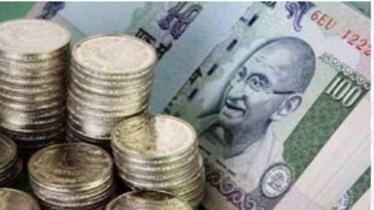A few years ago, D2C (direct-to-consumer) wearables startup Boult encountered a strange challenge. It received a ‘returns’ notification from a customer for a product, a newly launched smartwatch, it had sold via an online marketplace. Like always, on receiving the packet, the team opened it to do a quick quality check. But, to its surprise, instead of the smartwatch, the packet had a single piece of potato.
The incident may sound bizarre, but fraudulent returns (also called fake returns) have become frequent occurrences and is one of the biggest challenges brands selling through D2C websites or marketplaces grapple with. These include products that have been tampered with, stolen or damaged. There are also instances wherein consumers have multiple products for return and unknowingly send incorrect products.
“Fake returns eat into razor-thin margins, especially for D2C players who may already be battling fierce competition,” Somdutta Singh, an e-commerce expert and an angel investor told Fe.
A recent report by Appriss Retail estimates that fraudulent returns cost retailers globally a whopping $100 billion annually. Studies show that for every dollar lost in stolen merchandise, retailers lose an additional $5.80 in processing fees. In India, the problem is just as bad, with the National Retail Federation of India (NRFI) pegging losses from returns fraud at a staggering ₹24,000 crore in 2020.
Product returns in general result in higher transportation and labour costs for the platforms. It takes away a significant amount of the company’s revenue. According to Unicommerce’s India e-commerce Index Report 2023, in FY23, return orders comprised 10.4% of total orders and in FY22, it was at 9.8%. It also said that clothing stood out as the most returned online purchase category, with return rates ranging between 25% – 40%.
Within that, fraudulent returns constitute anywhere between 1-5% of total returns for most platforms. “Every fake return is a double whammy. You lose the initial sale and incur costs processing the return – shipping, restocking, potential refurbishment,” added Singh. This is despite delivery personnel being trained to do quality checks during reverse pick up and maintaining clear and detailed return conditions that are communicated to customers upfront.
Fraudulent returns can also vary between different sales channels such as direct sales vs third-party sellers vs online marketplaces from 0.5% up to 5%. “For instance, channels like beauty products aggregators show higher fake return rates than some of the marketplace platforms,” Amartya Guha, vice president – supply chain, SUGAR Cosmetics said. He added that fake returns directly impact the cost of goods by 4%, as they involve handling, restocking, and potential loss of goods.
For Boult, the fake returns rate constituted approximately 7-8% of the total returns in 2022 and 2023. However, technological intervention and other proactive measures have helped the brand bring it down to 3% at present.
“We employ product tagging with RFID or barcodes, enabling us to track items from shipment to return seamlessly. Pre-shipping and delivery video tracking ensure a clear record of product condition before dispatch, while automated systems perform return quality check (QC) by verifying item authenticity upon receipt,” Varun Gupta, co-founder, Boult said.
SUGAR Cosmetics has also witnessed a downward journey from 4% to 1-2% in the last few years. “We use automated systems for fraud detection, which analyse patterns and anomalies in transactions of the customer base. Platforms like Shopify have unique features to spam fake customers and numbers, even specific geography,” Guha added.
For Fireside Ventures-backed online fashion brand FableStreet, the fake returns concern comes more from marketplaces than its own websites as generally the returns around marketplaces are higher. “However, since the processes are streamlined either ways, none of the stakeholders get penalised for it. Fake returns lead to increased pickup logistics costs and, in the case that the damaged products pass through the several QC checks, there are product-related costs as well,” Ayushi Gudwani, founder and CEO, FS Life (previously FableStreet) said.
Returns make for less than 1% of the total platform returns. “Over the last couple of years, with timely intervention, we have been able to reduce the fake returns from about 1.5% to 0.5% till date,” Gudwani added.
Experts believe that though many startups are making strides in terms of reducing the returns rates using technology, there has not been a dramatic drop overall. For Bengaluru-headquartered Techno Sportswear, which recently raised $25 million from A91 Partners, approximately 4-5% of all returns are fraudulent.
“Fake returns are a pressing issue for us, impacting profitability through increased operational costs and damaged inventory,” Puspen Maity, CEO, TechnoSport said.
